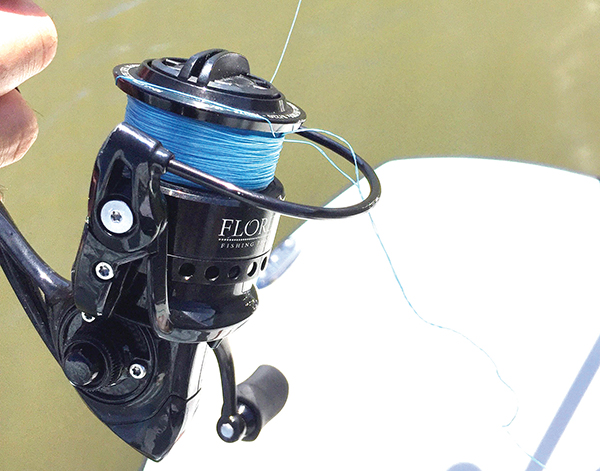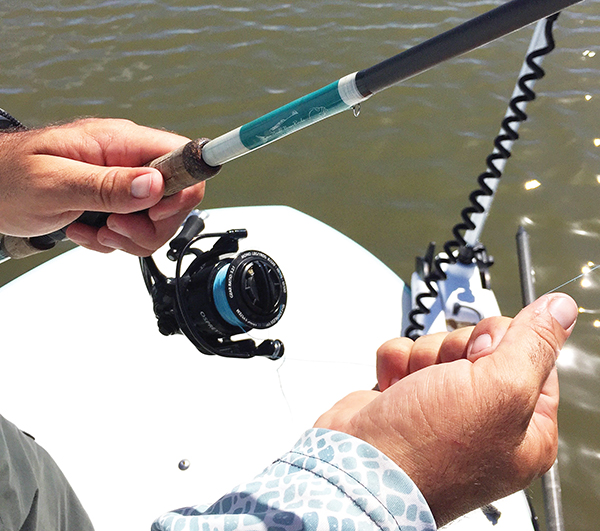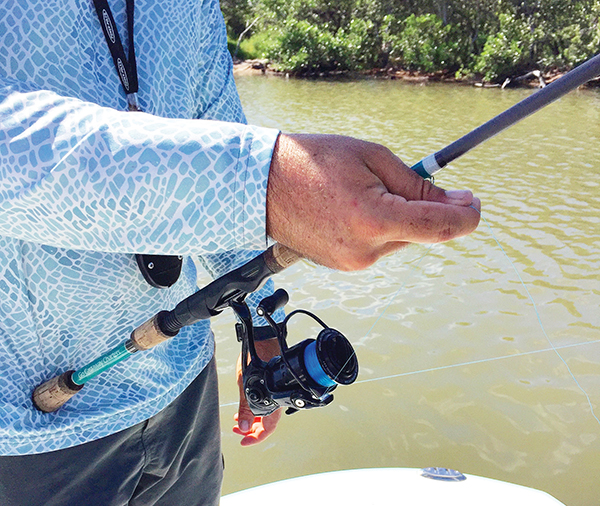Capt. Jonathan Moss
Hello, and welcome to this month’s PRO TIP. My name is Capt. Jonathan Moss of Go Castaway Fishing Charters, and I want to talk to you about braided line – specifically, wind knots. Each type of fishing line, whether it be braid or monofilament, has its advantages and disadvantages. For example, I will always choose monofilament over braid while targeting yellow tail snapper and sheepshead. Why? It’s clear and extremely difficult for these particular fish to see. However, if I am stalking fish on the flats, braided line is the way to go because of its incredible cast ability and strength at such a narrow diameter. Unfortunately, braided line has a tendency to make wind knots. A wind knot is created when slack occurs within the spool of your spinning reel and then forms a loop when the bail is closed. A wind knot is the spinning reel’s version of a bird’s nest or backlash on a bait-casting reel. So how do we prevent and/or fix wind knots? It isn’t as difficult as one might expect.
To prevent wind knots, I implement two easy steps when casting:
1.I close my bail by hand (as this is better for your reel’s bearings) just prior to the lure or bait hitting the surface of the water. This step allows the weight of the lure or bait to immediately pull the line tight which in turn prevents slack in the spool and the creation of a loop.
2.For a softer presentation, I allow my lure to land on the water, then again flip the bail closed by hand followed by grabbing and pulling the line tight to the spool before I begin my retrieval. This will ensure the line is tight and no loops are formed.
Both of these simple steps taken literally seconds and will help you avoid wind knots.
Even with proper preparation, wind knots can still occur. I have witnessed countless individuals, including myself, attempt to remove these unfortunate moments the hard and expensive way. This is done by opening the bail and pulling out the line. This causes the free line to wrap around the wind knot making it almost impossible to get out, which then leads to having to cut off of expensive, tangled, braided line.
Instead, lets follow these 3 easy steps:
1) Loosen the drag. Make the drag light enough to where you can pull the line with ease.
2) Close the bail and pull the main line out (not the loop or tangle). I know what you’re thinking: That’s the “hard and expensive way!” By having a light drag and a closed bail, you can pull on the line to remove it from the spool, and the spool will spin with the loop. It will not cause the free line to spin and wrap around the loop. Instead, the spool and free line spin with the loop which allows you to get to the knot without creating a larger one.
3) Spool the line tightly. After you have pulled the loop out, tighten the drag and reel the line back onto the spool tightly by holding the line between your fingers. This will eliminate any potential slack or loops as you reel the line onto the spool.
These three easy steps will not only save you time and money but will keep you from being frustrated on the water while fishing! As always, thanks for reading this month’s PRO TIP and until next month, tight lines!
Capt. Jonathan Moss
Go Castaway Fishing Charters
www.gocastaway.com
407-760-8593




